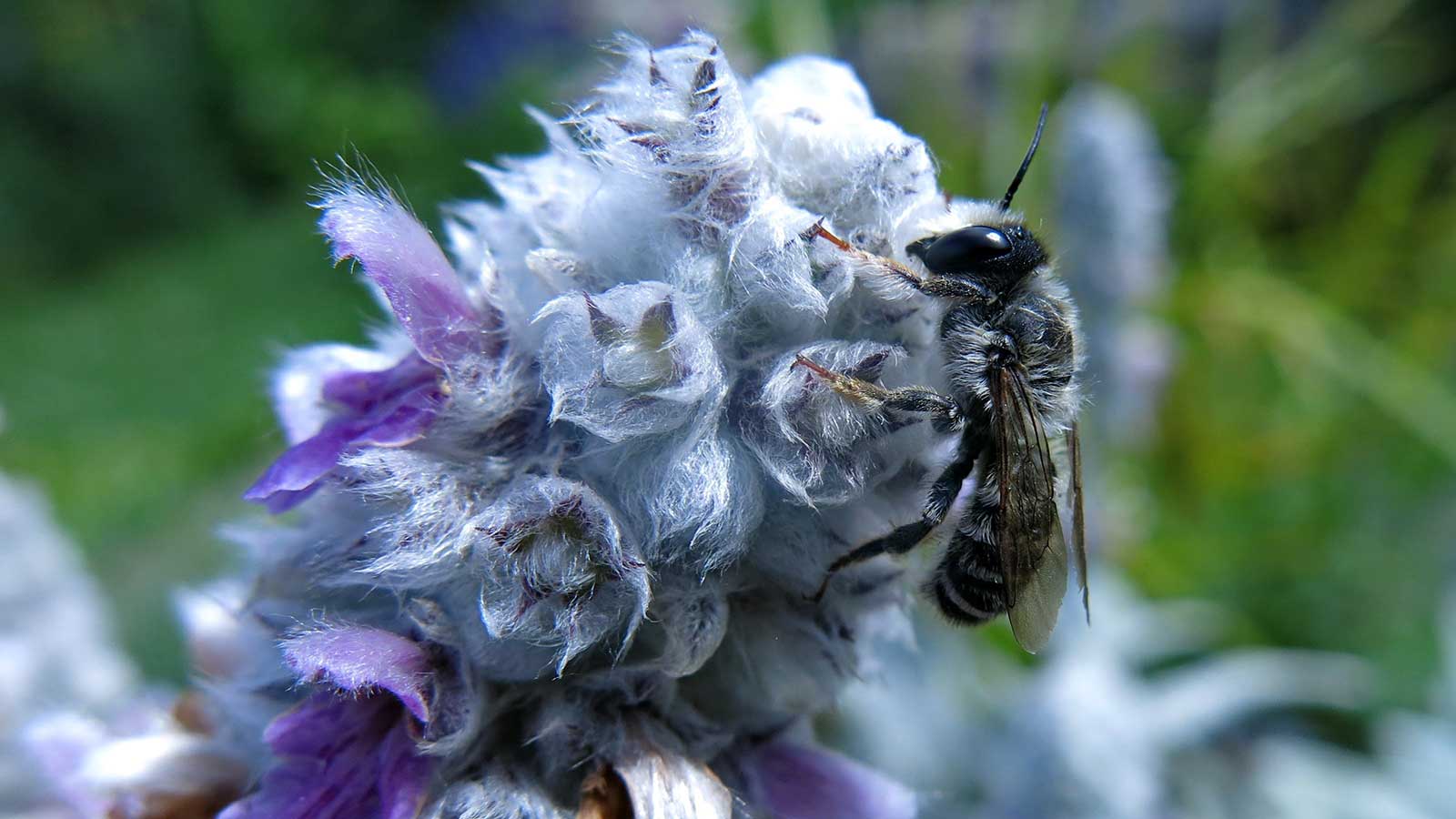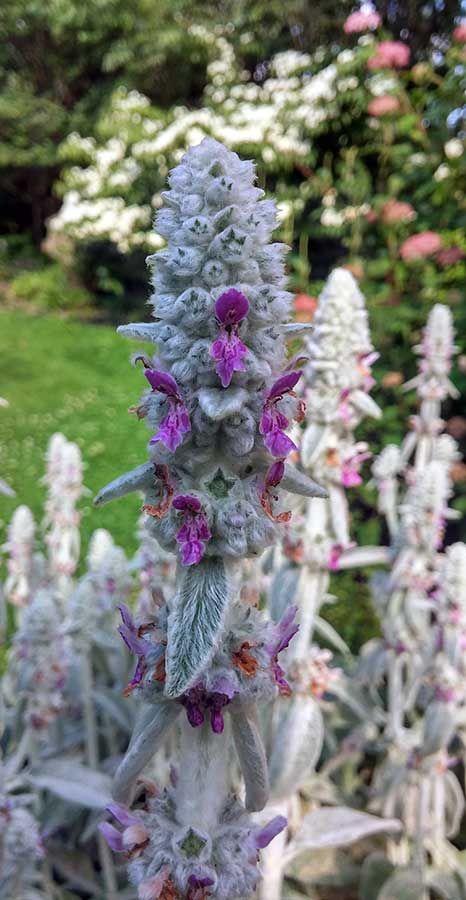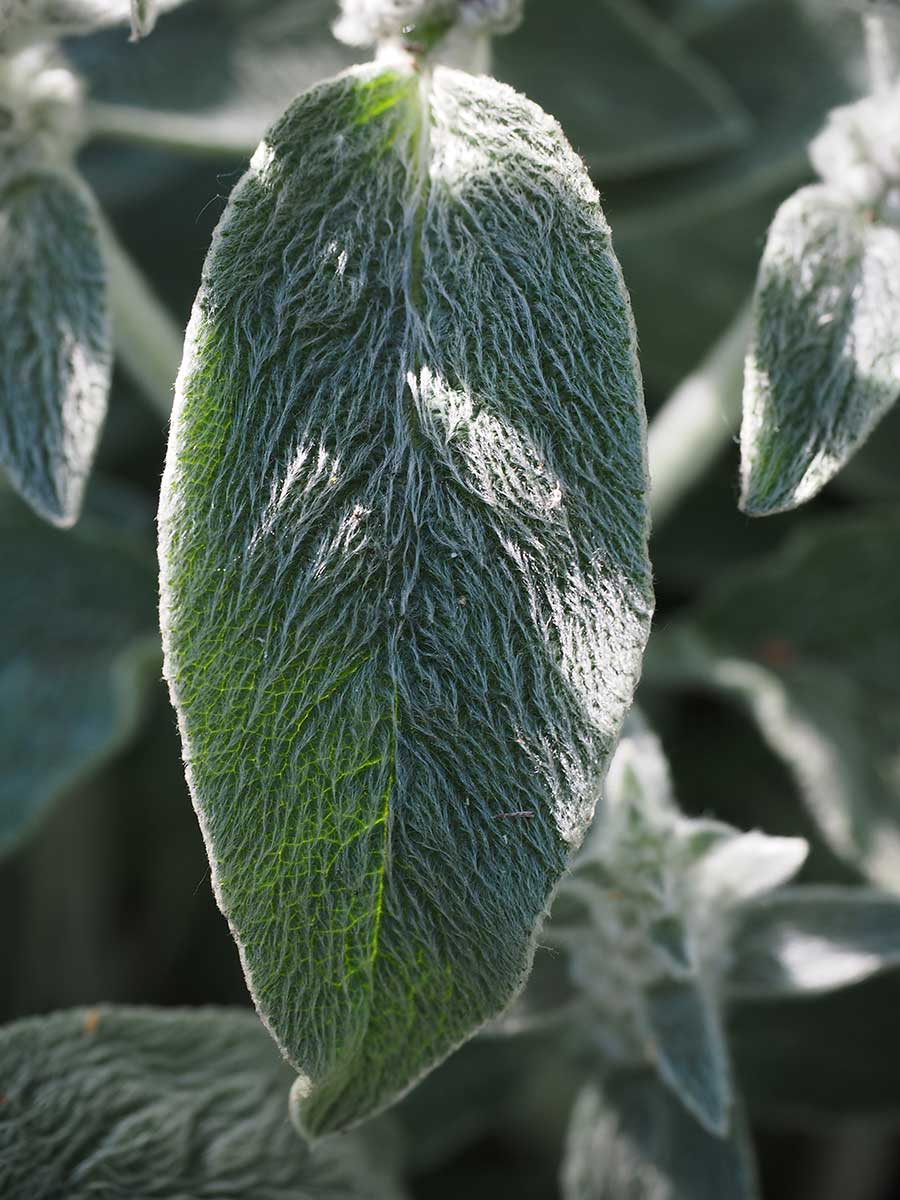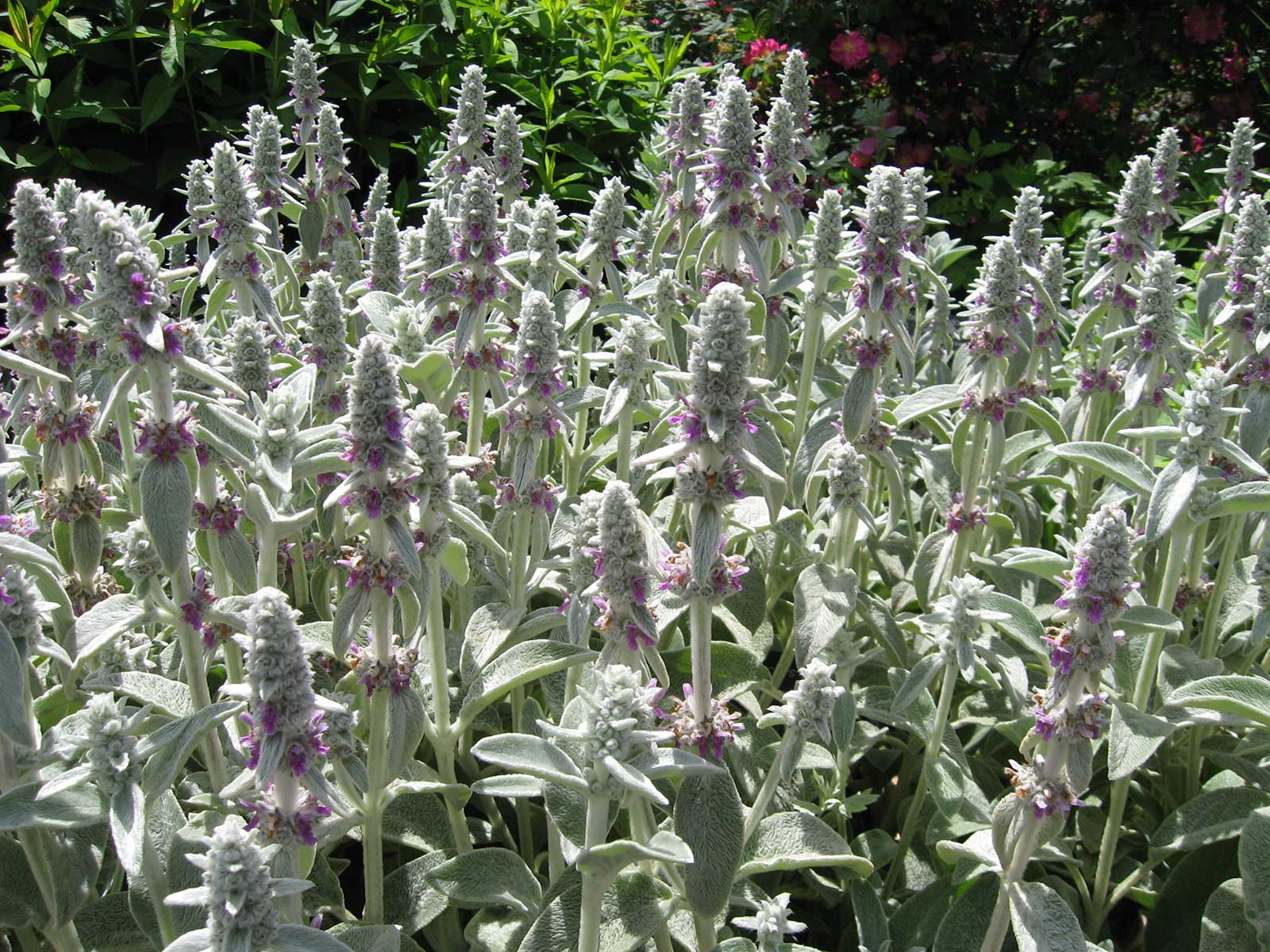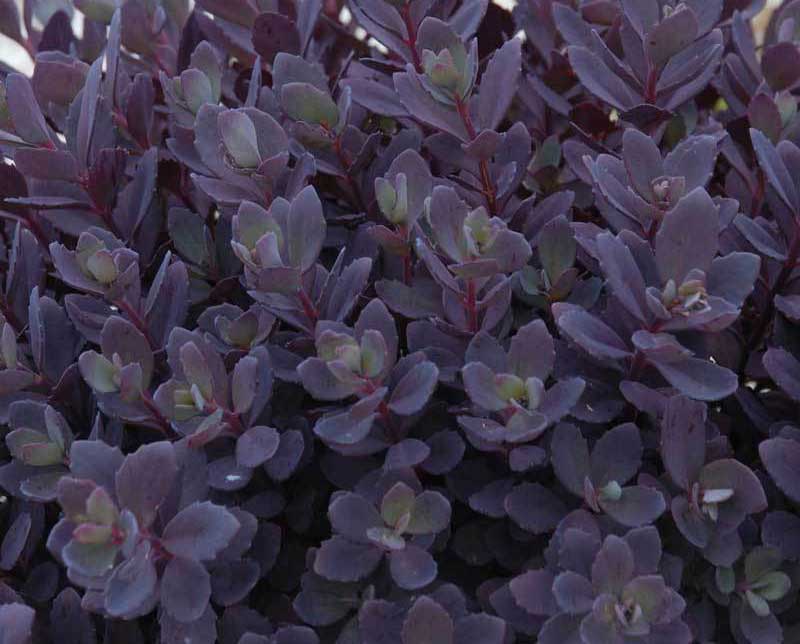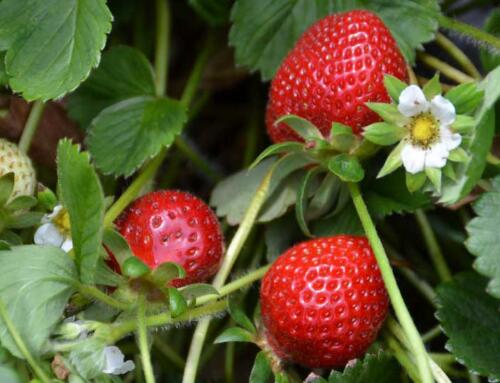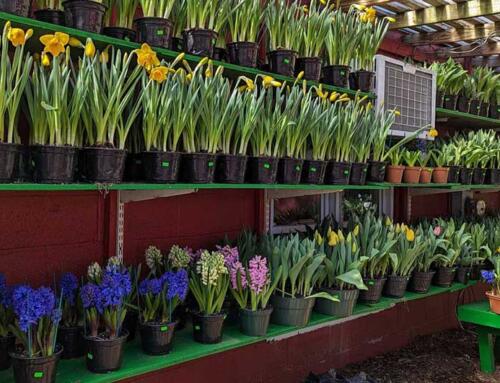Stachys “Byzantina” Big Ears
Perennial Mint – family “Lamiaceae“
“If the bee disappeared off the surface of the globe, then man would have only four years of life left. No more bees, no more pollination, no more plants, no more animals, no more man.”
Remember going to the petting zoo with your kids and touching baby lambs? This the feeling of the leaves of Stachys byzantina, also known as Lamb’s Ear. If you love growing perennials, you need to give this hardy plant a try. It is easy to grow, has a lovely texture and the prettiest flowers on tall graceful stems. Lamb’s ears does best in full sun where it will get hours and hours of sunlight daily. The stems of the flowers are tall and erect and often branched. They can grow to 1 1/2 to 3 feet tall and make quite a show when the plant is totally in bloom. Lamb’s ears grows readily from divisions. Every 3 or 4 years divide the plant in early spring, just as the new growth begins. The plant will benefit from a good pruning close to the crown in spring to remove dead leaves. An excellent pollinator plant, Lamb’s Ear is attractive to garden visitors. Bees, butterflies, and hummingbirds love it.
- Lamb’s ear is a low-growing, spreading perennial plant with velvety, pale, silvery gray-green foliage. The growth rate is medium but steady. Gardeners plant it primarily for the color and texture of its elliptical leaves and often recommend it for children’s gardens because of its soft feel, which is the source of the plant’s name.
- Lamb’s ear leaves are thick, leathery, and slightly. They are covered on both sides with silky hairs. The hairs are grey on the top surface of the leaves and whiter on the undersides. Lamb’s Ear flowers in late spring or early summer, depending on the weather. The flowers are light purple. They appear in whorls over a long spike-like stem. The flower whorl is similar to a cluster, but it is composed of more elements. The flowers have no pedicels.
- The silvery foliage makes an especially nice complement to purple flowering plants. Lamb’s ear is native to dry regions of western Asia, and it does best in relatively dry to medium-moisture conditions. Aside from deadheading the flowers and flower stalks, lamb’s ear requires very little maintenance.
Lamb’s ears (Stachys byzantina) is a favorite addition to any garden with it’s silver color and irresistible soft, fuzzy velvety feel of the leaves. This creeping herbaceous perennial native to the Middle East and hardy in zones 4-9 is cultivated throughout much of the temperate world as an ornamental for its unique texture and color. There is one cultivar with much larger leaves that is offered under the names ‘Big Ears’, ‘Countess Helen von Stein’ or ‘Helene von Stein’.
This vigorous cultivar of Stachys forms a low mound (6-12 inches tall) of dense, rosettes with more of a grey-green cast than the bright silvery-white appearance of the species. The huge leaves grow up to a foot long (twice as big as the species) and are thickly covered on both sides with long, white, silky-lanate hairs, giving them the characteristic silver-grey color. It is evergreen in areas with mild winters but dies back almost to the ground in cold areas. The stems will root where they contact the soil, allowing the plant to spread. Purple flowers appear in sporadic furry flower spikes held erect above the foliage in late spring or early summer.
Use ‘Big Ears’ as a groundcover, for edging, or spilling out along a path to soften the edges of hard, straight lines. It can also be used in larger mixed containers or in a sensory garden for people to touch the wooly leaves.
An excellent companion planting for Stachys Lambs Ear is Sedum Plum Dazzled shown to the right. The contrast of the silver leaves of the Stachys with the brilliant purple sedum foliage makes for a stunning focal point in any perennial or garden bed. It combines well with roses, iris, catmint (Nepeta) and sedums, and contrasts nicely with many herbaceous perennials in a cottage garden. It can be used in herb gardens, mixed in with herbs that have low water needs, such as lavender, sage, and thyme. It makes a wonderful addition to a sunny rock garden. The silver foliage looks great massed in the front of the border with purple flowers or as an accent plant against dark green or purple foliage.

